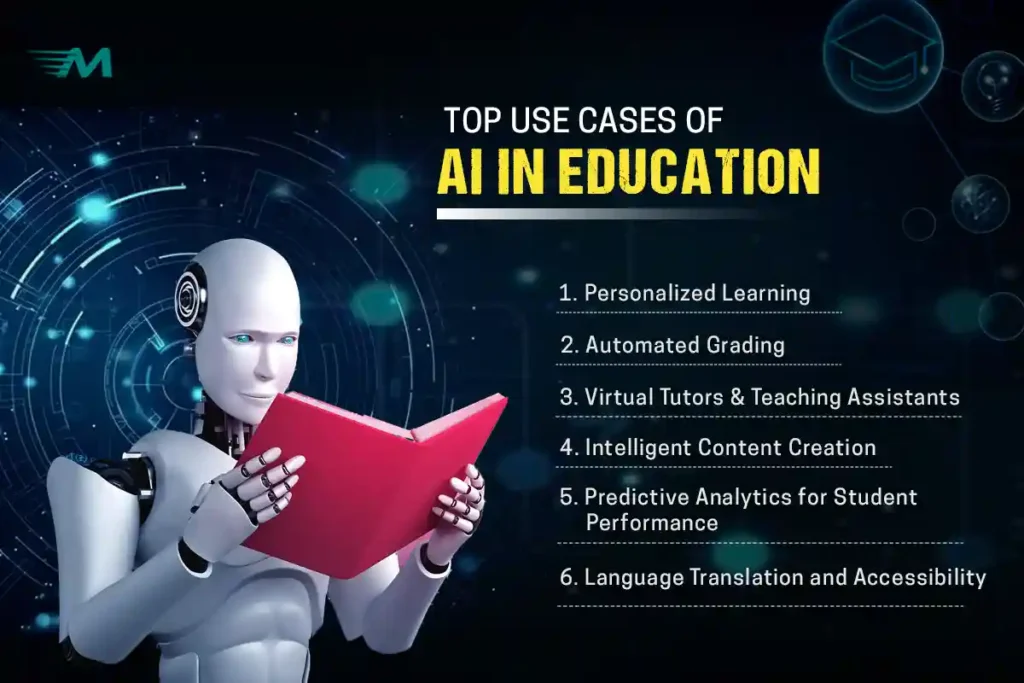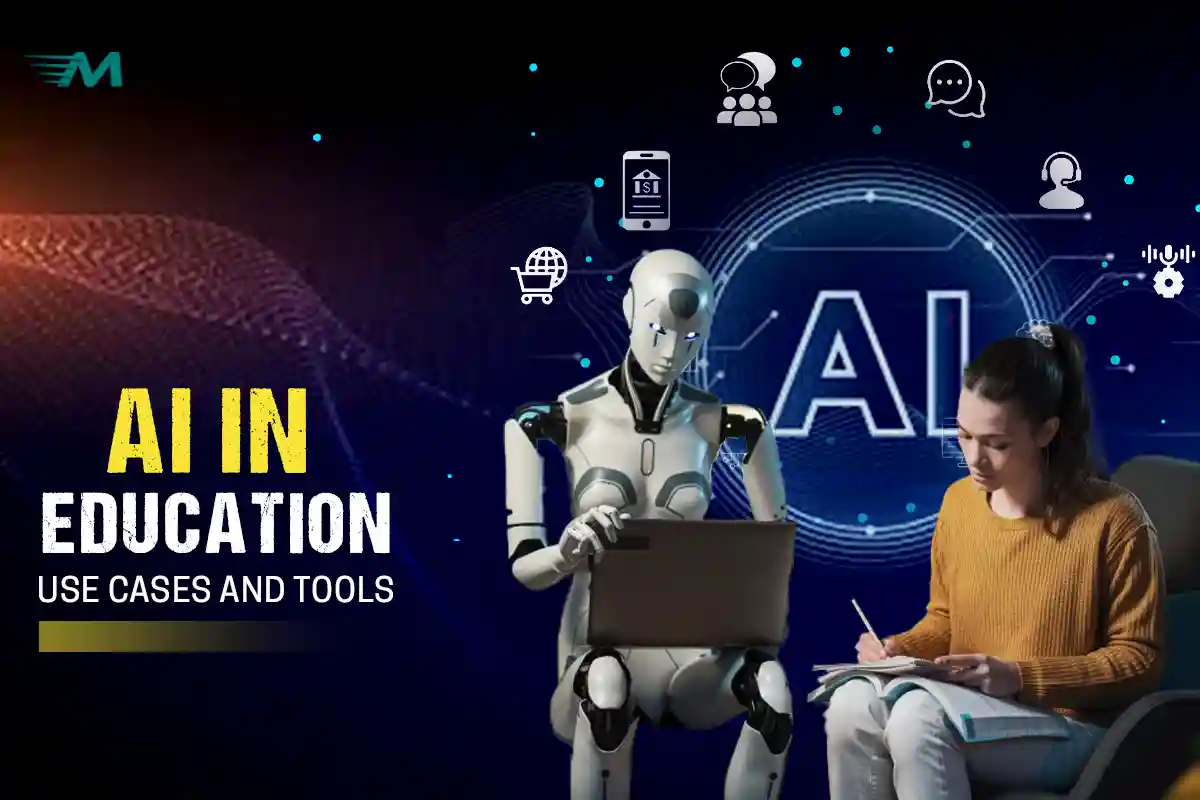AI in Education: Use Cases and Tools
In a world rapidly driven by technology, the education sector is undergoing a massive transformation. Artificial Intelligence (AI) is no longer a futuristic concept; it’s here and actively reshaping how we learn, teach, and manage education systems. From personalized learning to intelligent grading systems, AI in education is revolutionizing classrooms globally.
For educators, edtech founders, school administrators, tech-savvy parents, and curious students, understanding the real-world use cases of AI in education is crucial. It not only enhances student outcomes but also simplifies tasks for teachers and opens new avenues for smarter learning.
Let’s dive into how artificial intelligence in learning is changing the game and explore the top AI tools, use cases, benefits, and future trends you need to know.
Table of Contents
How AI is Transforming Education
Artificial Intelligence is not replacing teachers it’s empowering them. Think of AI as a smart assistant in the classroom: helping tailor content to each student, analyzing performance trends, automating repetitive tasks like grading, and even offering real-time support through virtual tutors.
Whether it’s a child learning math basics or a university student preparing for competitive exams, AI for students provides a customized and adaptive experience.
Top Use Cases of AI in Education
Here are some of the most impactful AI classroom use cases transforming traditional learning:

1. Personalized Learning
No two students learn the same way. AI algorithms can track learning behavior, assess knowledge gaps, and provide personalized content, whether a student learns best through videos, quizzes, or reading. Tools like Squirrel AI and Century Tech are already pioneering this space.
2. Automated Grading
Grading is one of the most time-consuming tasks for teachers. AI can automate the grading of multiple-choice, short-answer, and even essay-type questions with remarkable accuracy. Platforms like Gradescope allow teachers to spend more time on teaching and less on paperwork.
3. Virtual Tutors & Teaching Assistants
AI-powered chatbots and virtual tutors can answer student queries 24/7, provide explanations, or simulate one-on-one sessions great for distance learning. Think of ChatGPT being used as an assistant for homework help or concept clarification.
4. Intelligent Content Creation
AI helps generate smart learning content such as flashcards, practice tests, and video summaries. Tools like Quizlet AI or Khan Academy’s AI Tutor enable dynamic content creation tailored to curriculum needs.
5. Predictive Analytics for Student Performance
AI tools can analyze attendance, assignment completion, test scores, and engagement to predict if a student might fall behind. Early interventions help prevent dropouts or academic failure.
6. Language Translation and Accessibility
AI-powered tools like Google Translate and Microsoft Immersive Reader help break language barriers in multilingual classrooms and make learning inclusive for students with special needs.
Top AI Tools in Education You Should Know
Here’s a list of cutting-edge education AI tools making waves in classrooms and online learning platforms:
| Tool | Use Case |
| ChatGPT | Virtual tutor, content generation, Q&A |
| Gradescope | AI-assisted grading for assignments/tests |
| Khanmigo (Khan Academy) | AI tutor for guided learning |
| ScribeSense | Automated assessment of handwritten work |
| Century Tech | Personalized learning path recommendations |
| Quizlet AI | Smart flashcards and quizzes |
| Google Classroom AI tools | Admin automation, email summarizing |
| Carnegie Learning | AI-based math tutoring and feedback |
| Otter.ai | Real-time transcription for lectures |
These tools are bridging the gap between traditional and modern education, making learning more effective and accessible.
Real-World Examples of AI in Learning
- India’s Central Board of Secondary Education (CBSE) integrated AI training for students and teachers, using tools like Microsoft’s AI curriculum.
- Duolingo, a popular language-learning app, uses AI to personalize grammar exercises and vocabulary practice based on learner behavior.
- Georgia State University used an AI chatbot named “Pounce” that helped reduce summer melt by answering thousands of student queries instantly, increasing enrollment.
These examples show how AI in education is not just a trend—it’s delivering measurable impact.
Pros and Cons of AI in Education
Let’s look at the advantages and limitations of adopting AI in classrooms:
Pros:
- Personalized learning paths for students
- Time-saving automation for teachers
- Real-time feedback and analytics
- Accessible learning for students with disabilities
- Scalability in online and hybrid education models
Cons:
- High implementation and training costs for schools
- Data privacy concerns
- Over-reliance on technology
- Reduced human interaction in some learning experiences
While AI enhances efficiency, it should complement, not replace, human educators.
Future Trends in AI for Learning
The future of artificial intelligence in learning is filled with possibilities:
- Emotion AI: Tools that detect student emotions through facial expressions and voice tone to adjust teaching methods.
- AI-Powered Learning Companions: Personalized AI companions that follow students throughout their education journey.
- Gamification with AI: Engaging students with interactive simulations and gamified learning powered by real-time AI feedback.
- AI in Curriculum Design: Smart suggestions for curriculum updates based on global educational trends and learner feedback.
As AI advances, we’ll see even deeper integration in both K-12 and higher education settings.
Final Thoughts:
AI in education isn’t just a buzzword it’s the future of impactful, efficient, and personalized learning. From simplifying a teacher’s workload to helping a student finally grasp that difficult math problem, education AI tools are reshaping the classroom experience.
However, the goal should be balanced integration. AI should be used to enhance human teaching, not replace it. With thoughtful use, AI for students and teachers can bridge gaps, unlock potential, and foster a smarter generation of learners.
If you’re an educator, school leader, or edtech innovator, now is the time to explore how AI can work for your classroom or learning product. The future of education is here are you ready to adapt?
FAQs
Q1. What is AI in education?
AI in education refers to the use of machine learning algorithms and automation to enhance teaching, learning, and administrative tasks in schools, colleges, and edtech platforms.
Q2. How can students benefit from AI?
Students benefit from personalized study plans, instant doubt-clearing via virtual tutors, better accessibility, and improved engagement through interactive AI tools.
Q3. Are AI tools replacing teachers?
No. AI tools support and enhance teaching but cannot replace the emotional intelligence, mentorship, and adaptability of human educators.
Q4. Are there privacy risks involved?
Yes. Student data security is a key concern. It’s important for schools and tool providers to follow strict data protection laws and ethical AI use policies.

